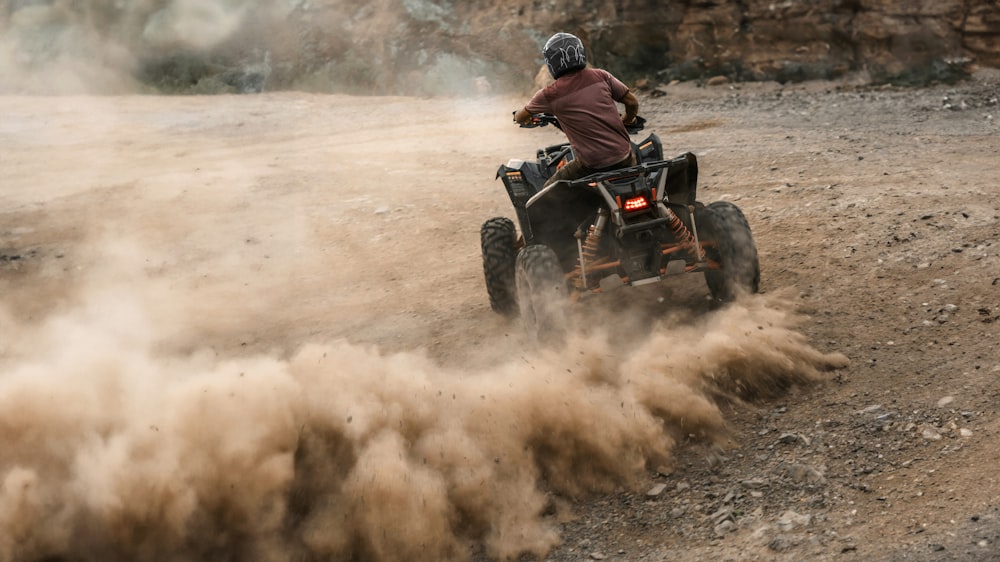
Introduction
Powersports encompass a wide range of thrilling activities that involve motorized vehicles, including ATVs, dirt bikes, snowmobiles, and personal watercraft. Getting started in powersports requires understanding the necessary equipment, safety gear, and preparation to ensure a safe and enjoyable experience.
Relevance and Importance
Being well-prepared for powersports activities enhances your safety and enjoyment. This guide will cover the essential items and knowledge needed to embark on your powersports adventures with confidence.
Types of Powersports Vehicles
All-Terrain Vehicles (ATVs)
Versatile off-road vehicles designed for a variety of terrains, used for both recreational and utility purposes.
Dirt Bikes
Motorcycles designed for off-road trails, motocross, and other rugged environments.
Snowmobiles
Motorized sleds used for traveling over snow and ice, popular in winter sports.
Personal Watercraft (PWC)
Small, jet-propelled watercraft used for recreational activities on lakes, rivers, and oceans.
Utility Task Vehicles (UTVs)
Side-by-side vehicles designed for both work and recreation, offering seating for multiple passengers.
Essential Gear and Equipment
Safety Gear
- Helmet: A DOT-approved helmet is crucial for protecting your head in case of an accident.
- Goggles: Protect your eyes from debris, wind, and sunlight.
- Gloves: Ensure a firm grip on handlebars and protect your hands from the elements.
- Boots: Sturdy, high-quality boots provide ankle support and protection.
- Protective Clothing: Wear appropriate clothing such as jackets, pants, and body armor to protect against injuries.
Vehicle Maintenance Tools
- Tool Kit: A basic tool kit for minor repairs and adjustments.
- Spare Parts: Carry essential spare parts like spark plugs, fuses, and tires.
- Fluid Supplies: Keep extra oil, coolant, and other fluids on hand.
- Cleaning Supplies: Maintain your vehicle with cleaning solutions and equipment.
Safety Accessories
- First Aid Kit: Essential for treating minor injuries in the field.
- Communication Devices: Radios or mobile phones for emergency communication.
- GPS or Maps: Navigation tools to avoid getting lost.
- Safety Flags: High-visibility flags for ATVs and UTVs to improve visibility in off-road conditions.
Training and Preparation

Skills Training
- Riding Courses: Enroll in riding courses to learn proper techniques and safety practices.
- Licensing and Permits: Ensure you have the necessary licenses and permits for operating powersports vehicles.
Physical Preparation
- Fitness: Maintain good physical fitness to handle the physical demands of powersports.
- Hydration and Nutrition: Stay hydrated and well-nourished to keep your energy levels up during activities.
Vehicle Selection and Customization
Choosing the Right Vehicle
- Assess Needs: Determine the primary use—recreational, racing, utility, or a mix.
- Evaluate Options: Compare different models and brands to find the best fit for your needs and budget.
- Test Drives: Test drive potential vehicles to ensure comfort and performance.
Customization
- Upgrades: Consider upgrading parts like suspension, tires, and exhaust systems for better performance.
- Accessories: Add accessories like storage racks, winches, and lighting for increased functionality.
Safety and Environmental Considerations
Riding Safely
- Follow Laws and Regulations: Adhere to local laws and regulations for powersports vehicles.
- Ride Responsibly: Avoid reckless behavior and respect other riders and the environment.
- Weather Awareness: Check weather conditions before heading out to avoid hazardous situations.
Environmental Impact
- Stay on Designated Trails: Reduce environmental damage by sticking to designated trails and areas.
- Respect Wildlife: Avoid disturbing wildlife and their habitats.
- Clean Up: Leave no trace by cleaning up after yourself and your vehicle.
Maintenance and Care
Regular Maintenance
- Scheduled Service: Follow the manufacturer’s recommended maintenance schedule for regular service.
- Inspections: Conduct pre-ride inspections to check for any issues or damage.
- Cleaning: Regularly clean your vehicle to prevent build-up and corrosion.
Storage
- Proper Storage: Store your vehicle in a dry, secure location to protect it from the elements.
- Winterization: Prepare your vehicle for off-season storage with appropriate winterization techniques.
Conclusion
Entering the world of powersports is an exciting endeavor that requires proper preparation, safety gear, and vehicle maintenance. By understanding the essentials outlined in this guide, and checking out new haven powersports you can ensure a safe and enjoyable experience, whether you’re tearing up trails on an ATV, navigating snowy paths on a snowmobile, or skimming across the water on a personal watercraft. Equip yourself with the right knowledge and gear to fully embrace the thrill of powersports.